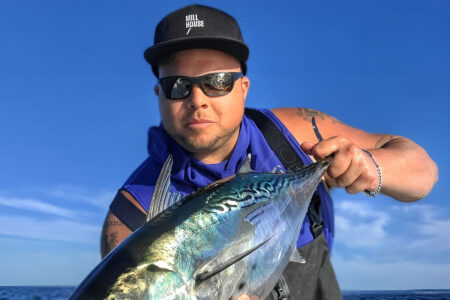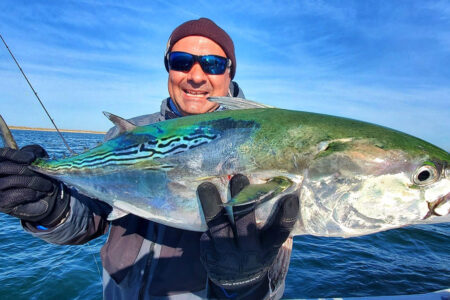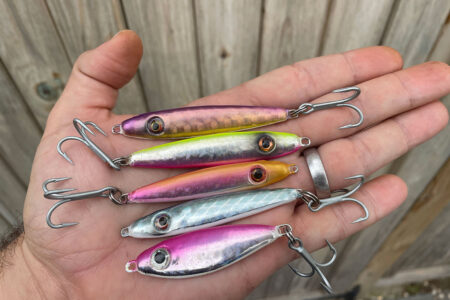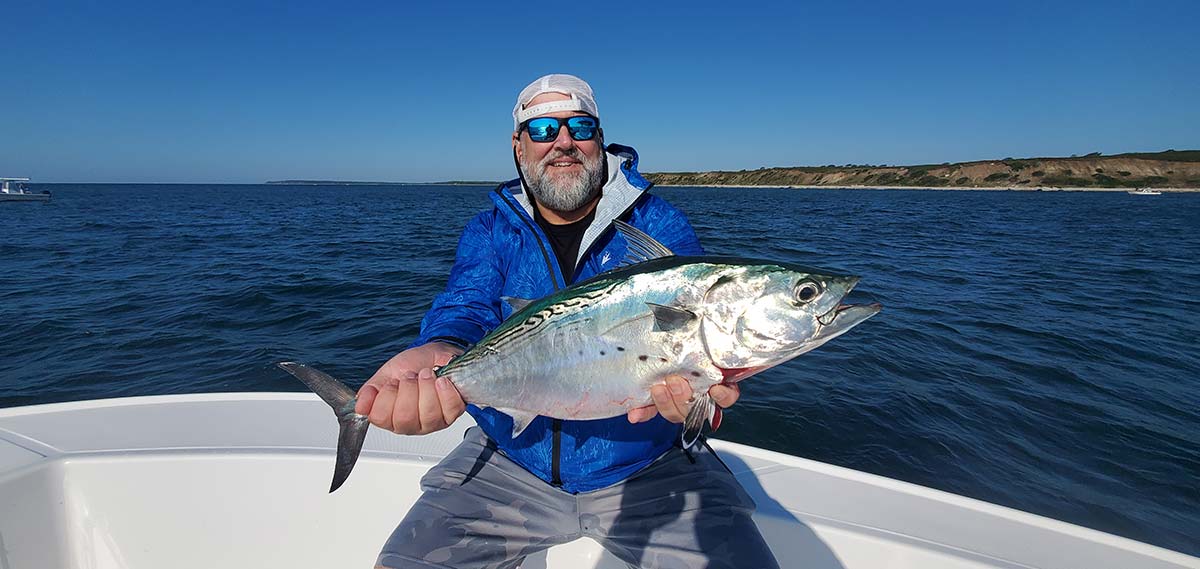
Grade your days based on conditions to get the most out of the Cape Cod albie season.
I woke with a subtle, increasingly annoying, digital alarm. Mr. Sandman did his best to cloud my vision as I wiped away the echoes of dreams erased by the alarm clock: it was 4 a.m. My surfcasting gear was already prepped and stowed for my jaunt to the south side of Cape Cod, where the plan was to greet a few false albacore at sunrise.
The treetops above swayed in the slight breeze, which was a major improvement over the strong blow the day before; but the real story would be told when I hit the coast. As is typical in New England, autumn weather can turn in the blink of an eye; and every tide can bring change, and that change isn’t always positive. The window for Northeast anglers seeking inshore pelagics is small – beginning in late August and lasting into October – understanding environmental conditions can help you forecast the likelihood of success and make the most of your fishing time.
Gaining Clarity
As I looked out over Nantucket Sound, the sky was black and sprinkled with stars, but a slight glow was unveiling to the east. I scanned the darkness looking toward the Vineyard, flickering with lights from the rising islanders. A couple center consoles bucked on the grey water, cloaked in the orange glow of dawn, revealing a slight chop. My focus now shifted to the water surrounding my feet, and in that moment, the promise of a repeat performance of days prior faded to a wish. The previous day’s storm had churned the seas to a milky brown, most albie fishermen would categorize this as the least favorable water condition. Albies rely on their excellent vision for sight feeding, and thus, water clarity is one of the key indicators for a successful venture. If I was going to salvage the day I would have to find clean water and I had an idea.
My drive took me along the coast, allowing me to scan the water for activity, and shortly thereafter, I rounded a bend, and found a spot to pull over opposite a small cove. To my left, a lone boat appeared to be spying for a pod of fish, seemingly too far for a surfcaster. Nonetheless, I donned my waders, and worked my way out amongst the rocks. The tide was now running pretty hard right to left, and sure enough, the water was clear enough to allow me to see nervous schools of bait. A telltale swirl just in front of my rocky perch caught me in mid-cast as a pod of albies exploded a short distance away; and I frantically skipped my Tsunami Candy Jig back to recast. But, as quickly as they appeared, they were gone. The blind cast curse had struck again.
However, my perseverance held even as the boat moved on to try their luck elsewhere. Suddenly, the silver bullets appeared just out of casting range, but were on the move. The albies made a push, chasing a ball of peanut bunker down the shore racing right at me; my cast was spot on, the jig landed, I cranked hard and fast and an albie ate it. A screaming run followed by a dogged fight concluded with me wrapping my hand around the tail of a lit-up little tunny, pushing double digits. Cleaner water was the key to finding the fish and, often, moving water translates to better clarity.
Weathering Storms
Last September, during the second week of the month, I had the chance to fish with Captain Terry Nugent of Riptide Charters. As most Northeast anglers know, Terry is considered one of the top skippers in the region, and has been chasing albies for decades. Given his vast experience, it should come as no surprise that Terry knows what conditions lead to a solid day on the water. According to Capt Terry, a bit of a blow is a good starting point, “I love the wind over those flat, calm days,” Terry told me, “It may be somewhat tougher for us to see the fish, but makes the line harder (for the fish) to see; and stirs them up.”
Another condition which can have a significant impact on the fish is a change in water temperature; although this can play a different role if occurring earlier verses later in the season. Early in the albie season, the young-of-the-year baitfish, will still be in the bays and estuaries; and according to Terry, “if a big storm comes through earlier in the season, it can actually work in your favor, dumping bait from the estuaries (to escape the colder runoff). This can form those big bait balls. However, later in the season, here off of Cape Cod, there’s only so many of these storms the fish can stand, and the resulting drop in water temperature will eventually push them south.” Fortunately for Terry, he extends his season by moving his operation to North Carolina for late fall, where albies can found into early winter.
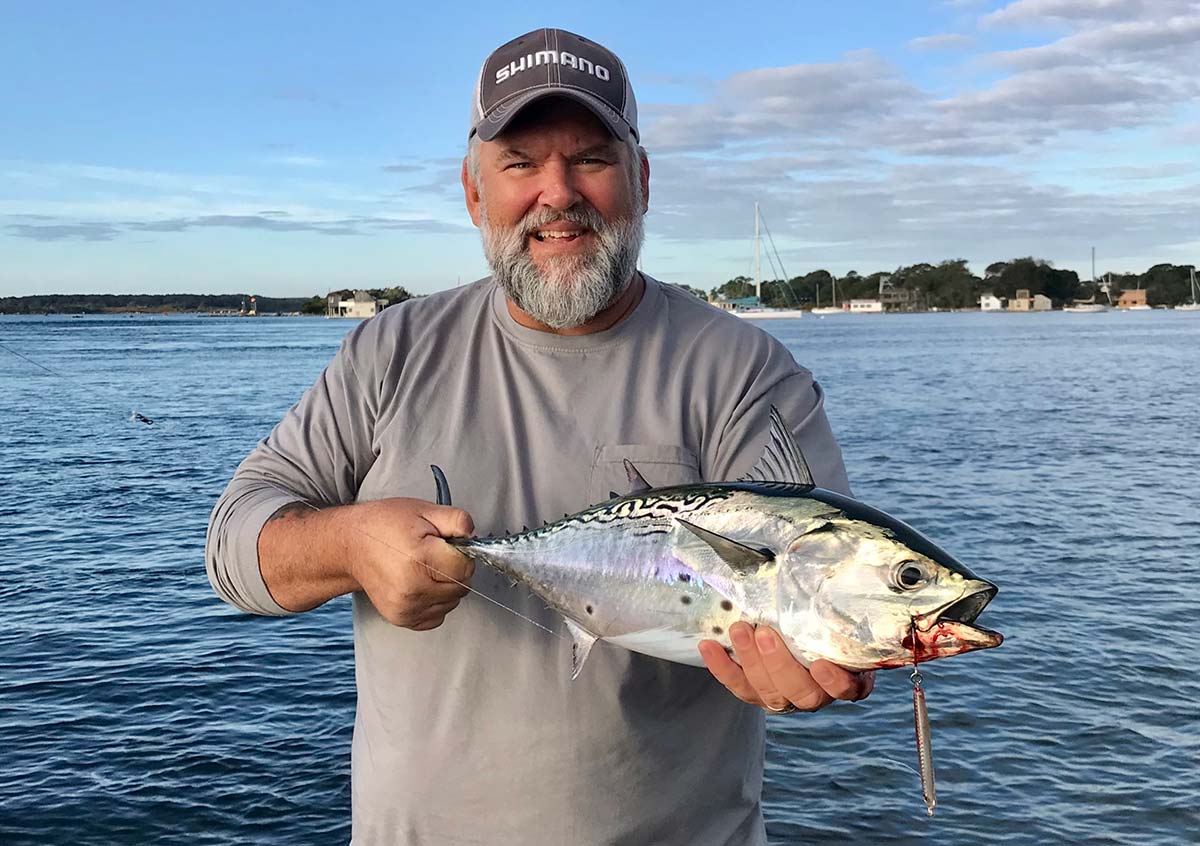
Mercury Rising
Temperature played a big part the day Terry and I departed from the Bass River, bound for a stretch of water between Stage Harbor and Monomoy Island. Expectations were running high, based on the action they’d seen the previous day, but there was some chance that the overnight cold front and accompanying rain could’ve disrupted the pattern.
We skipped the slight chop from Yarmouth, to the waters off Chatham, and around the other side of Monomoy with nary a glimpse of bait or predators, only lifeless green waves. The water had dropped 10 degrees overnight! Not wasting any more time wishing, we headed west, checking the surface temp as we scanned the radar and water for any sign of action. Just off Hyannis, we found a small cove with a slight uptick in temperature, and a small pod of albies. Although not interested in our offerings, it was, at least, a positive sign; and we continued westward.
Eventually, along the Mashpee shoreline, I spied what appeared to be a mass of weeds, but soon realized it was an enormous bait ball. Scores of peanut bunker, but only a slash or two witnessed from a few hinting fish. Throttle down, the water temperature continued to climb as we sped west, and so did the number of bait balls, and a few scattered albies. Onward passed Woods Hole, down to the Elizabeths, the water finally came alive. Bait, birds, albies, and finally I was tight to a false albacore. A short time later, another hookup, and a swing and a miss. The day’s final tally wasn’t one for the record books, but all told, we did 130 miles round trip looking for the right conditions. Now that’s a captain who understands that the conditions dictate the albie forecast.
Blue Or Grey?
An additional albie consideration is bluebird versus overcast skies. I have personally enjoyed great outings under both conditions, but those bright, calm days have been more likely to produce lackluster results. Albies are sight feeders, graced with big eyes and excellent vision so it’s no wonder that with a high, overhead sun and glasslike seas, even the lightest tackle may still be detectable and making the fish more cautious. This is where some wind can boost your chances.
On the opposite side of the spectrum, low light can also improve your success ratio. Chris Parisi of Tsunami Tackle, prefers just such conditions. Chris says he prefers overcast days with a little chop. In addition, while we have all encountered feeding frenzies at different times of the day, he prefers to focus on early morning and late afternoon. One thing most of us can attest to is, once night falls, it would be extremely rare to hook up with an albie.
Enduring The Snot
A fitting example of an overcast day proving to be superior for albies played out perfectly for me a few years ago. I had been surfcasting since the ‘funny fish’ arrived, and over the course of a few weeks, I’d been having a hit or miss season, with some days forgettable, others decent, and the day in question, the cold rain just wasn’t getting my spirits up. That would soon change as darkness gave way to a grey sky, and drizzle fell in place of the rain. The water was still relatively clean and the stiffening northwest wind put just enough ripple on the water. The incoming tide drew the current to keep a steady supply of bait moving through the channel. An hour had passed and the drizzle dissipated to a fine mist.
And then, the telltale splash, followed by dozens of others. A pod of albies was busting up the channel. As soon as my jig hit the edge of the school I was on. A blazing fish, racing the jetty, and then down the beach and back. A big, double-digit albacore more suited for those buffalo schools off of North Carolina waters, than the south side of Cape Cod. An hour and a half later, the tide slacked, and I slogged my way back to the barn, a half dozen albies had come to the hand; and suddenly I didn’t mind the weather any more.
One thing is certain, it undoubtedly pays to understand conditions, weather and environmental factors when trying to forecast your own albie success. You can grade the day based on factors such as ‘cloudy versus sunny’ and then score the likelihood of success by overlaying the wind (and resulting chop) into the scenario at hand. If it’s sunny and calm, you might want to save the sick day, but if the winds foretell a snottier day, call the boss. But, keeping an eye on the local buoy data with emphasis on the water temps should also play a role in your forecast, if there’s been a sharp drop in water temps, gas up before you go, because you may find yourself exploring. Above all else, plan to be out early or to stay out until dark, these are the times when magic is mostly likely to happen. Forecasting takes some time to nail down, but it will really help you get the most out of the fall run.
I’ll see you in the suds!

